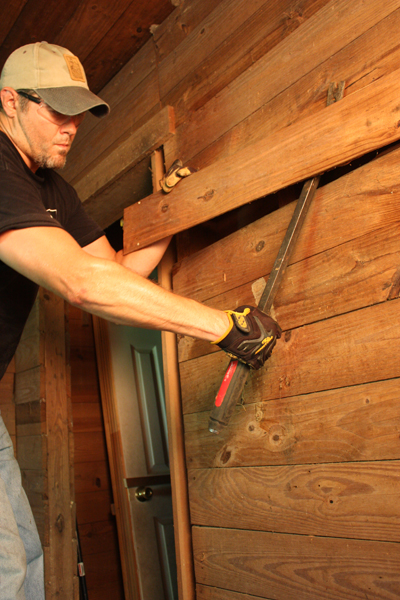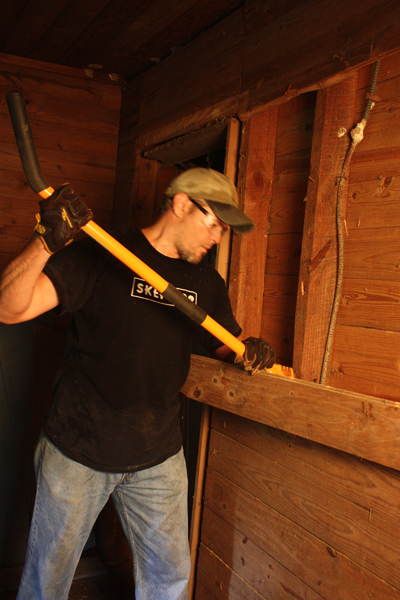
I spent last Friday pulling tongue-and-groove pine off an old house that was built sometime in the 1940s. The house had been used by my family as a barn for the last several decades, and the interior wood had a rich, distressed quality. My dad plans to demolish the house this fall, so it was time to salvage anything that was worth salvaging. The walls were covered in what is commonly called slow-growth pine, which is expensive to purchase these days. The growth rings in the wood are typically more tightly spaced which gives it a warm, detailed character and enhances its dimensional stability, so the boards stay straighter and the grain is less likely to check. I used a couple of heavy-duty pry bars to pull the material off the wall studs, including a Dominator from Mayhew Tools and The Gutster Demo Bar. I’ve now got a stack of the slow-growth pine stacked in my workshop and ready for a project–the first of which will be a bed headboard, if my wife has anything to say about it.
I asked a couple of woodworking friends what they suggested as methods of finishing the wood, and here are a couple of suggestions I got:
- “I would suggest oil, boiled linseed was the traditional finish” — Hal Jones, Pro Tool Review
- “Amber shellac is a good choice. But to get what you want, test a few finishes on a couple of pieces of the wood. You can also test various degrees of surface treatment … sanding, planing, etc to get the surface you want.” — Rob Johnstone, Woodworker’s Journal
— M. Weber




